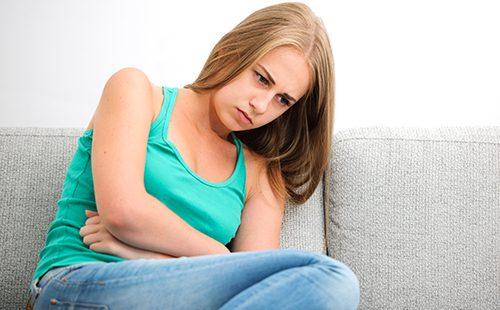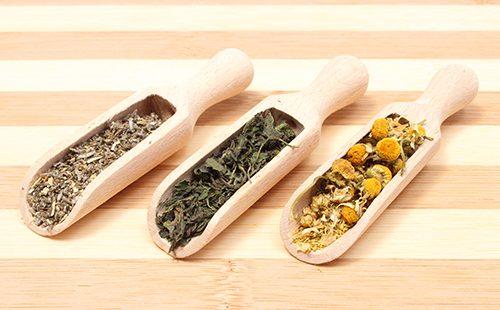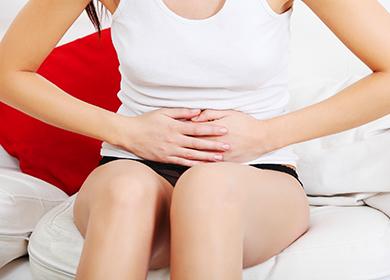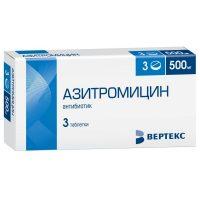The content of the article
It is easier to treat bilateral adnexitis, like any other disease, on time ... Until he has acquired a mark in the medical record - hr. That is chronic. But in gynecology, the phenomenon of this disease has long been known, consisting in the fact that very often it is completely asymptomatic, which means that it can be difficult to detect it at an early stage. And even at a chronic stage, only indirect signs can serve as a reason for a visit to the doctor. Meanwhile, if adnexitis is not treated on time, then it can become the first step to more serious diseases, and how many troubles it can bring on its own ... Even after a good treatment, you can find that the pain remained because adhesions had formed.
With inflammation of the appendages, not only the ovaries are involved in the process, but also the fallopian tubes with all adjacent tissues (hence the second name of adnexitis is salpingoophoritis). The likelihood of complications is higher, the more aggressive the microorganisms that caused the disease. Adnexitis can be caused by the activation of its own opportunistic flora, as well as any sexually transmitted infection.
What a disease
Salpingo-oophoritis according to ICD-10 passes under the code N70. The following variants of the course of adnexitis can be distinguished:
- acute - such a diagnosis is established with vivid symptoms, high fever and pain;
- subacute - with subfebrile temperature, washed away signs of the disease;
- chronic adnexitis - characterized by relapses and the presence of the effects of inflammation (eg, adhesions);
- single and double sided - when involving appendages from one or both sides, respectively, allocate right-sided and left-sided adnexitis;
- primary and secondary - in the first case, the focus of inflammation is localized directly in the ovaries and fallopian tubes, in the second - it is “transferred” from adjacent organs - the rectum, appendicular process, bladder;
- adnexitis complications - Ovarian abscesses, adhesions, cysts are most common.
Why arises
Adnexitis is an inflammation of the fallopian tubes, ovaries, and adjacent structures. Normally, these organs are not sterile, but a balance is maintained between the beneficial flora and opportunistic. With a decrease in the body's defenses, the latter begins to prevail, causing an active inflammatory process. In addition, the penetration of obligate pathogens into this area causes inflammation immediately (this applies to all sexually transmitted infections (STIs)). The result of this is fluid accumulation, edema and an increase in all structures, pain of varying severity.
Thus, the infection enters the fallopian tubes and ovaries in the following ways.
- Ascendant. In this case, the infection penetrates from the vagina of the woman into the uterine cavity and further into the fallopian tubes, ovaries and abdominal cavity. For example, chlamydia, gonococci, urea and mycoplasmasTrichomonads.
- Descending. Pathogens penetrate the fallopian tubes and ovarian tissue through the lymphatic and blood vessels, with other biological fluids, as well as with close contact of organs (and in the small pelvis all structures are located “side by side”). In this case, for example, inflamed appendicitis can be combined with adnexitis on the right.
- Aggravation. If a girl already had an episode of adnexitis, illiterate or incomplete treatment (for example, if the medication regimen is not followed) attenuates the process, but some of the pathogens remain and are in a semi-active state. The slightest provocations (for example, hypothermia, stress, illness) lead to another episode of adnexitis.
Who happens more often
Acute adnexitis occurs only in sexually active girls. Chronic can worsen throughout life when immunodeficiency occurs. The following groups of women are prone to adnexitis:
- with immunodeficiency - with blood diseases, HIV, tuberculosis, after childbirth;
- during hypothermia - for example, when working in rooms with low temperatures, on the street, in the case when the girls dress “not according to the weather”;
- with unprotected sex - promiscuous sexual life without barrier protection always ends with inflammation of the appendages;
- with irregular replacement of the IUD - the spiral itself “as a conductor” for infection from the cervix into the cavity and further into the tubes, and exceeding the time of use leads to a complicated course of adnexitis - with the formation of abscesses, peritonitis;
- with endocrine pathology - with diabetes mellitus, thyroid diseases, the normal immune response is disrupted, therefore, the risk of a complicated course of adnexitis is higher.

Symptoms of adnexitis in women
Depending on the severity of the inflammatory process, the clinical picture of adnexitis varies. Features of symptoms in various cases are reflected in the table.
Table - What is characterized by adnexitis
| Sign | Acute | Subacute | Chronic | Complicated |
|---|---|---|---|---|
| Pain (localization) | - Lower abdomen, right or left; - the sacrum and lower back may hurt |
|||
| Pain (intensity) | - sharp, cutting, stitching; - hurts in any position | - medium intensity; - amplified by walking and active movements | - Severe pain; - may be pulsating |
|
| Temperature | - Not lower than 37.5 ° C | - No, it may be subfebrile with exacerbation | ||
| Overall well-being | - weakness; - lethargy; - chills | - Almost unchanged | - does not suffer | - Depends on the type of complication |
Other symptoms of adnexitis:
- with the involvement of the urinary organs - there are signs of cystitis, urethritis (pain, pain when urinating, blood in the urine);
- if the intestines are involved - there may be diarrhea, false urge to the toilet;
- menstrual irregularities - Delays, heavy and painful periods.
Possible complications
Adnexitis rarely passes without a trace. In addition to the main treatment, it is important to protect your body from provocateurs of inflammation (hypothermia, overwork, stress), as well as have sexual literacy.
Ovarian abscesses, pyosalpinxes
These are the most dangerous consequences of adnexitis in women. Abscess - accumulations of pus in the ovaries. They are "balls" filled with a creamy liquid with an unpleasant putrefactive odor.In parallel, pus accumulates in the fallopian tubes (pyosalpinxes). This condition is characterized by:
- heat;
- severe abdominal pain;
- signs of peritonitis;
- general serious condition of the girl.
Adhesive disease
In 98% of cases, adnexitis is dangerous in that it is accompanied by the formation of adhesions in the pelvis. These are thin “threads” of tissue that connect two surfaces, for example, the top and bottom of the lumen of the fallopian tube, the ovary and intestines, the ovary and the walls of the pelvis. As a result, the free sliding of organs relative to each other is disrupted. This leads to the following:
- pain, discomfort - especially on the eve of menstruation, during sexual intercourse, in violation of the diet and gas formation in the intestine;
- hydrosalpinges - with numerous adhesions around and inside the fallopian tubes, patency is impaired, over time, a secret accumulates in the lumen, including an inflammatory one, hydrosalping is formed;
- infertility - an active inflammatory process leads to obstruction of the fallopian tubes, which creates a mechanical obstacle to the meeting of germ cells.
Dysfunctions of the ovaries and cysts
Adnexitis can lead to a violation of the integrity of the ovarian tissue. Immunity begins to respond to the ovaries as a foreign material - an autoimmune response is formed, the result of which is the following:
- dysfunctional uterine bleeding and cycle disorders;
- change in ovulation;
- ovarian exhaustion and early menopause;
- the formation of functional cysts.
Diagnostics
The diagnosis of adnexitis is based on the complaints of a woman and the results of her examination on a gynecological chair. Additionally, the following methods are used.
- Pelvic ultrasound. In this case, free fluid is found in the pelvis, around and inside the fallopian tubes (signs of chronic periadnexitis - inflammation around the appendages). Cysts can be fixed on the ovaries. With a thorough examination, signs of an adhesive process may be noticeable.
- STI screening. If pathogens are detected in the vagina by PCR or bacteriological culture, in the presence of a clinical picture of adnexitis, the disease can be confirmed and the most appropriate treatment prescribed.
- Laparoscopy. It is used in unclear cases with an “acute abdomen”, as well as for the treatment of such forms of chronic adnexitis as hydrosalpinx (accumulation of fluid in the fallopian tubes), adhesions in the small pelvis.
If necessary, the range of examinations can be expanded to exclude other diseases and determine treatment tactics.
Treatment
The treatment of adnexitis largely depends on its type, but any scheme begins with conservative therapy and only special conditions (for example, an abscess) require urgent surgery.
In the acute period
Adnexitis therapy begins with antibacterial therapy, it is advisable to carry it out taking into account the sensitivity of the alleged microflora (for example, based on vaginal culture). The following groups of drugs are used:
 macrolides — «Azithromycin"," Erythromycin "," Josamycin "," Clarithromycin ";
macrolides — «Azithromycin"," Erythromycin "," Josamycin "," Clarithromycin ";- cephalosporins - "Cefazolin", "Cefotaxime", "Cefuroxime";
- tetracyclines — «Doxycycline»;
- penicillins - "Amoklav";
- antimicrobial - Metronilazole.
Depending on the severity of inflammation with adnexitis, two or more antibiotics can be prescribed at the same time. Treatment begins with intramuscular or intravenous injections, then you can switch to oral administration.
In addition, the following groups of drugs are used:
- vitamins - usually it is C, B, A and E, they strengthen the immune system, contribute to the normalization of menstrual function in women;
- desensitizing - used to relieve tissue edema, which reduces pain;
- anti-inflammatory - drugs such as Ketorolac, Ibuprofen help relieve pain and reduce signs of inflammation;
- immunostimulants - “Ruferon”, “Viferon”, as well as “Likapid”, “Cycloferon” are prescribed, especially if there is a suspicion of the combined viral and bacterial nature of adnexitis.
Chronic therapy
Chronic adnexitis worries a woman during a relapse. The following treatments are used to relieve seizures and improve well-being:
- antibiotics
- vitamin complexes;
- anti-inflammatory;
- corrective immunity.
It is also prescribed for adnexitis:
- physiotherapy - magnetotherapy, UHF to the lower abdomen, electrophoresis with drugs, ultrasound, baths (iodine-bromine, radon);
- autohemotherapy - a woman’s blood is taken, and then the entire volume is injected intramuscularly, so the immunity is stimulated;
- hormonal drugs - oral contraceptives are prescribed for at least three months, which create a “rest period” for the ovaries, thereby reducing the likelihood of their damage and regulating the menstrual cycle.
When is surgery needed?
Surgical treatment of adnexitis is used only in cases where it was not possible to muffle the process with medication. Also, such interventions are necessary to treat complications and restore reproductive function (for example, tubal plastic during adhesions). The main indications for surgical treatment are as follows:
- the formation of abscesses of the ovaries and piosalpinges;
- recurrent hydrosalpinges;
- as a stage of infertility treatment.
Disease and pregnancy
Inflammation of the appendages is the lot of young and sexually active girls, for whom in the near future the question of pregnancy is likely to become. The most common questions associated with this are as follows.
- Can I get pregnant with adnexitis. During the treatment of inflammation, it is recommended to refrain from sexual intercourse. It is also necessary to treat a partner. With unprotected sex, there is a chance of conception, but the risk of developing an ectopic and non-developing pregnancy is increased.
- When can I plan children after adnexitis. Thinking about a new pregnancy should be after the completion of a full course of therapy, including hormonal drugs. As a result, the optimal planning time is no earlier than three months.
- Can there be adnexitis during pregnancy. The gestagen background, which is formed during gestation, contributes to the attenuation of all chronic inflammatory processes in the appendages. Therefore, drawing, aching pains are not a sign of adnexitis, but a symptom of something else, for example, the threat of interruption. But the “reverse side of the coin” - chronic foci of infection can lead to bearing pathology - premature discharge of water, intrauterine infection of the fetus.

Folk recipes
Folk remedies are most effective in combination with the main treatment and to reduce the manifestations of chronic adnexitis. All recipes are easy to reproduce at home, and reviews confirm their effectiveness in the treatment of adnexitis. There are practically no contraindications to the execution, with the exception of individual intolerance to the components.
- Dimexide swabs. The medicine has analgesic, anti-inflammatory and warming effects. It is necessary to moisten a piece of gauze in a solution and wrap it in a bandage, forming a small ball, but leaving a small end free for subsequent extraction of the tampon from the vagina. It is laid for the night in a course of 7-10 days.
- Oak plus sage and chamomile. To prepare the solution, you need to take dried and crushed oak bark, sage grass and chamomile flowers in a ratio of 1: 2: 3. Pour four tablespoons of a mixture of 1 liter of hot water and let it brew for two to three hours. Then strain and use a solution for douching and medical tampons.
- Honey plus propolis. It is necessary to take the ingredients in equal parts, form a ball, place it in gauze and lay in the vagina for the night. The course is up to 10 days.
- Thyme plus chamomile. It is necessary to take plants in equal parts and pour hot water (two to three tablespoons of the mixture a liter of liquid). Then add to hot baths, spending at least 15-20 minutes in them.
Prevention
Treatment of adnexitis in women is a long process and is not always "grateful", so the disease is easier to prevent. To this end, the following is recommended:
- Avoid accidental sexual intercourse;
- always use a condom;
- refuse sex during menstruation;
- do not supercool;
- observe hygiene.
Inflammation of the appendages is a danger not only to the health of a woman, but also to her reproductive function. Tubal obstruction after suffering adnexitis is one of the most common causes of infertility. It is important to pay attention to the prevention of genital infections. It happens that the treatment of adnexitis ends with removal of the ovaries and subsequent hormone replacement therapy.


